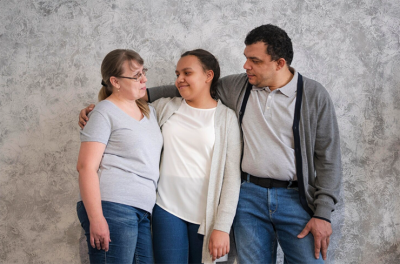Blog
How ADHD Impacts Emotional Life and Self-Esteem in Adolescents

Adolescence is a pivotal period of emotional growth, identity formation, and social belonging. For teens with Attention-Deficit/Hyperactivity Disorder (ADHD), this developmental stage is often marked by additional challenges. In comparison with their typically developing peers, adolescents with ADHD frequently struggle more intensely with emotional regulation — not only managing negative emotions like frustration, anger, or sadness, but also navigating moments of exuberant joy or excitement. Over time, these emotional oscillations can erode self-esteem and contribute to negative outcomes such as peer rejection, internalizing symptoms (depression, anxiety), or externalizing behaviors (aggression, defiance).
In this blog post, we explore (1) the emotional regulation difficulties faced by adolescents with ADHD, (2) how these difficulties can undermine self-esteem, (3) the interplay of peer relationships and comorbidities, and (4) practical strategies and interventions to support healthier emotional development and self-worth.
Emotional Challenges in Adolescents with ADHD
Emotion Dysregulation as a Core Feature
 While ADHD is traditionally defined in terms of inattention, hyperactivity, and impulsivity, growing evidence supports emotional dysregulation as a central and impairing domain across the lifespan.
While ADHD is traditionally defined in terms of inattention, hyperactivity, and impulsivity, growing evidence supports emotional dysregulation as a central and impairing domain across the lifespan.
Emotional dysregulation in ADHD includes increased reactivity, rapid mood changes, emotional impulsivity (outcome of feeling before thinking), and difficulty recovering from emotional states. Specifically, in population-based studies, about 38% of youths with ADHD report mood lability, ~10 times the rate of youths without ADHD.
Emotion dysregulation in ADHD includes heightened reactivity, rapid mood swings, emotional impulsivity (acting on feeling before thinking), and difficulty recovering from emotional states. In fact, in population studies, mood lability has been reported in ~38 % of youths with ADHD — nearly ten times higher than in non-ADHD peers.
Teens with ADHD may overreact or exhibit dysregulated behavior in situations involving positive emotions in addition to having a harder time with what we know as negative emotions. As you indicated, they may shout, leap, encroach on personal space, or exhibit other exuberance in ways.
Furthermore, recent research highlights that adolescents with ADcHD tend to have lower performance on emotion recognition (i.e. identifying others’ emotional states) compared to controls — suggesting deeper challenges not only in regulating their own feelings but also in interpreting social signals or being emphatic.
Daily Emotional Variability and Its Correlates
One striking finding is that day-to-day extremes in both positive and negative emotions are more common in adolescents with ADHD. For instance, large daily fluctuations in mood have been linked to lower peer acceptance, higher internalizing symptoms (anxiety, depression), and more externalizing symptoms (oppositionality, conduct problems).
Neuroscience models show that teens may have a harder time managing their emotions when they struggle with executive functions—like stopping impulsive reactions or keeping information in mind (working memory).
In sum: teens with ADHD often experience strong emotional ups and downs, react more intensely, and sometimes misunderstand others— all of which create fertile ground for struggles in social and internal domains.
How Emotional Challenges Affect Self-Esteem
Lower Self-Esteem Compared to Peers
Research consistently shows that teens with ADHD often have lower self-esteem than those without ADHD—especially when it comesto how they feel about themselves overall, how well they do in school, and how they relate to friends. A large, long-term study in the UK (the Millennium Cohort Study) found that ADHD symptoms can actually predict lower self-esteem later on. One of the key reasons is peer difficulties. When children struggle with attention or impulsivity, they may find it harder to make or keep friends, or may experience rejection or criticism from peers. Over time, these social challenges can chip away at how they see themselves.
In short, ADHD can make everyday experiences—like school performance or friendships—more difficult, and those repeated struggles often lead to feelings of frustration and low confidence. Recognizing this pattern early allows parents, teachers, and therapists to help children build stronger self-esteem through positive experiences and emotional support.
Mechanisms and Moderators
 Peer rejection and relational struggles
Peer rejection and relational struggles
One of the strongest pathways linking emotional dysregulation and self-esteem is via peer relationships. Adolescents with ADHD
frequently experience peer rejection, social isolation, or conflict, which in turn feeds negative self-perceptions. This study shows how peer problems partially explain how ADHD symptoms lead to lower self-esteem.
Comorbid internalizing and externalizing disorders
Children and teens with ADHD often experience other mental health challenges at the same time. These are called comorbidities, and they can be grouped into two main types:
-
Internalizing disorders, such as anxiety or depression, where emotions are turned inward.
-
Externalizing disorders, such as Oppositional Defiant Disorder (ODD) or Conduct Disorder, where behaviors are directed outward (for example, anger, defiance, or rule-breaking).
ADHD comes with a web of emotional and behavioral challenges that feed into one another, making support and treatment even more essential.
Positive Illusory Bias
Some children with ADHD show what researchers call a “positive illusory bias.” This means they see themselves as doing better than they really are—for example, believing they performed well on a task even when they struggled. Experts think this may be a natural way for children to protect their self-esteem and avoid feeling discouraged after repeated challenges.
However, this bias often fades during adolescence, as teens become more self-aware and begin comparing themselves to peers. When that happens, the contrast between their self-perception and real-world feedback can sometimes lead to frustration or disappointment.
Self-Esteem as a Bridge Between ADHD and Emotional Challenges
Research shows that self-esteem doesn’t just reflect how children and teens feel about themselves—it can actually influence other emotional outcomes. For example, ADHD symptoms can lead to frustration or academic struggles, which may lower self-esteem. In turn, this reduced self-esteem can increase the risk of depression, anxiety, or even risky behaviors.
In adults, studies consistently find that the more severe the ADHD symptoms, the lower the self-esteem tends to be. Low self-esteem can also act as a link between ADHD and psychological distress, including suicidal thoughts.
This means that helping children and teens with ADHD build and protect their self-esteem isn’t just about confidence—it’s a vital part of supporting their overall emotional well-being.
Consequences: Risk Behaviors, Family/Peer Conflict, Identity
When adolescents with ADHD confront persistent emotional and self-worth struggles, the fallout can be broad:
- Risk behaviors: Some may turn to substance use, impulsive decision-making, or thrill-seeking as maladaptive coping strategies. Although direct adolescent-specific evidence is less extensive, adult ADHD research implicates self-esteem in mediating risk pathways, that is one of the most important reasons to start helping your adolescent work on their self esteem.
- Conflictual relationships: Emotional outbursts or missteps (e.g., invading personal space, shouting) may be judged harshly by classmates, siblings, or parents, reinforcing negative self-views.
- Romantic difficulties: Self-esteem and emotional control challenges can complicate trust, communication, and intimacy in adolescent romantic relationships.
- Identity with stigma: Adolescents may internalize labels—“immature,” “loud,” “troublemaker”—which can damage the developing self-concept.
- Psychological comorbidity: Low self-esteem and emotional dysregulation heighten vulnerability to anxiety, depression, and self-harm in later adolescence or adulthood.
 Strategies and Interventions: Nurturing Emotional Strength and Self-Worth
Strategies and Interventions: Nurturing Emotional Strength and Self-Worth
When addressing ADHD, it’s important to look at the full picture—not just attention or hyperactivity. Many children with ADHD also experience emotional challenges or other conditions such as anxiety or oppositional behaviors. A thorough evaluation should explore how your child manages emotions, including irritability and mood changes, so that treatment can be as complete and personalized as possible.
Treatment that works best for ADHD often includes a combination of approaches. Medication—whether stimulant or nonstimulant—can help reduce core ADHD symptoms, allowing children to feel calmer and more in control. When their symptoms are better managed, they often have more emotional energy to build coping skills and resilience.
The most effective care usually involves pairing medication with psychosocial supports. Research shows that combining behavior therapy, cognitive-behavioral therapy (CBT), and parent training can significantly reduce emotional symptoms such as irritability and aggression. This kind of multimodal approach helps children develop healthier emotional regulation and promotes lasting improvements in both behavior and self-esteem.
Emotion regulation skill training
Supporting teens with ADHD also means helping them learn concrete tools to manage emotions. Skills like naming what they’re feeling, pausing before reacting, or using breathing and grounding techniques can make a real difference.
New research also highlights the promise of digital tools—such as apps or online programs—that teach emotion regulation skills. These digital health interventions have shown encouraging results in helping adolescents with ADHD better understand and manage their emotions in everyday life.
Finally, education is key. When teens learn how ADHD can affect their emotional systems, they’re less likely to blame themselves for feeling “too emotional” or “out of control.” Understanding that their reactions are part of how their brain works can reduce shame and promote self-acceptance, laying the groundwork for better emotional well-being.
Social skills and peer relationship support
Many children and teens with ADHD struggle in social situations—not because they don’t want friends, but because reading cues, managing impulses, or expressing emotions can be challenging. Helping them develop these skills in structured and supportive ways can make a big difference.
Social skills programs that include role-playing, coaching, and guided practice can teach important abilities like taking another person’s perspective, handling conflicts calmly, and expressing emotions appropriately. These lessons don’t just improve friendships—they also boost confidence and emotional awareness.
Creating safe and encouraging spaces—such as clubs, small group activities, or programs designed for neurodiverse youth—gives adolescents with ADHD the chance to practice social interactions in a positive environment where they can succeed and feel accepted.
It’s also important for parents, teachers, and caregivers to watch for signs of peer conflict or rejection early on. Interventions like peer mentoring or facilitated group activities can help prevent social setbacks and promote healthy, lasting connections.
Fostering Self-Esteem Through Strengths
Building self-esteem starts with helping teens see what they’re good at. Encourage them to spend time in activities where they can feel capable—whether that’s art, sports, music, or personal interests. These moments of mastery create a sense of pride that extends beyond school or social challenges.
Simple tools like positive feedback sheets or brief “I noticed…” notes (as suggested by Edutopia) can help parents and teachers recognize small wins and consistent effort.
Teens can also learn to affirm their own strengths, not just rely on outside praise. Cognitive-behavioral techniques—like challenging thoughts such as “I always mess up” and replacing them with more balanced ones—can nurture a healthier, more confident mindset.
Parent and family strategies
Parents play a powerful role in shaping how teens manage emotions. By modeling healthy coping—for example, saying “I’m feelingstressed, so I’m going to take a short break”—you show your child what calm regulation looks like in real life.
When your teen expresses frustration or sadness, start by validating their feelings (“I can see you’re upset”) before jumping into solutions. This builds trust and helps them feel understood.
Finally, aim to coach rather than criticize. Work together to rehearse responses, calm down after conflicts, and plan better strategies for next time. These moments teach emotional regulation more effectively than lectures ever could.
Emotional regulation difficulties and associated self-esteem challenges are critical yet sometimes underappreciated dimensions of ADHD in adolescence. The emotional rollercoaster, peer rejection, internalized negative beliefs, and comorbid conditions all conspire to erode well-being. However, because these domains are malleable, thoughtful interventions (pharmacological + psychosocial), skill-building, relational support, and strength-based approaches offer real hope. When families, schools, and clinicians work together to understand and support the emotional lives of adolescents with ADHD, we can foster not only more stable moods—but healthier self-esteem and life trajectories.
References
- Bunford N, Evans SW, Wymbs BT. Emotional dysregulation and Attention-Deficit/Hyperactivity Disorder. (PMC review) PMC
- Shaw P, Stringaris A, Nigg J, Leibenluft E. Emotion Dysregulation in Attention Deficit Hyperactivity Disorder. American Journal of Psychiatry. psychiatryonline.org
- Wehmeier PM, Schacht A, Barkley RA. Social and Emotional Impairment in Children and Adolescents with ADHD. Journal of Adolescent Health. JAHOnline
- Mazzone L, Viggiano MP, Valeri G, et al. Self-Esteem Evaluation in Children and Adolescents. Clinical Practice and Epidemiology in Mental Health. 2013. CPEmentalhealth
- Russell A, et al. Developmental relations between ADHD and self-esteem. (Springer, 2025) SpringerLink
- E-Health / Digital interventions review: A Narrative Review to Identify Promising Approaches for Digital Interventions for Emotion Regulation in ADHD Adolescents. mental.jmir.org
- Cortical / neurodevelopmental emotion regulation article: Emotion regulation beyond executive and attention difficulties BioMed Central
- Systematic review of psychosocial interventions for emotion dysregulation in ADHD youth ScienceDirect
- Dan O., Raz S. The Relationships Among ADHD, Self-Esteem, and Test Anxiety in Young Adults. ResearchGate
- Frontiers article: Emotion Regulation in Participants Diagnosed With Attention Deficit Hyperactivity Disorder Frontiers





